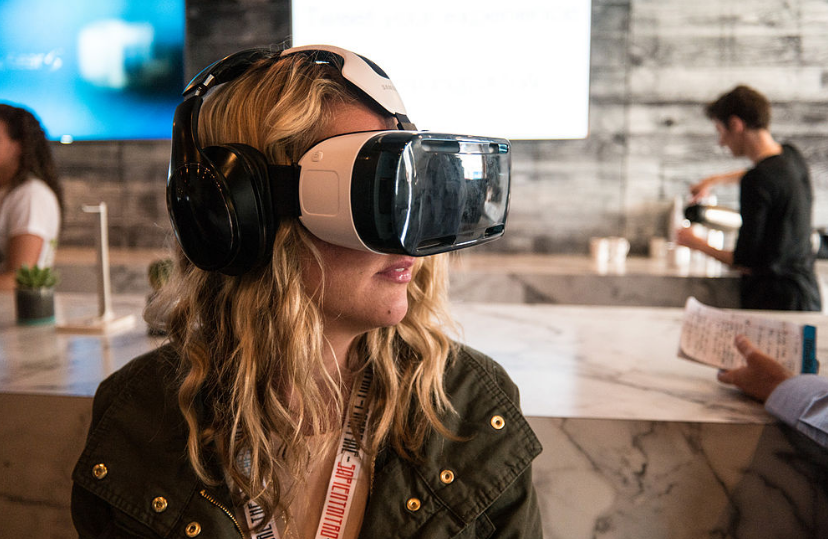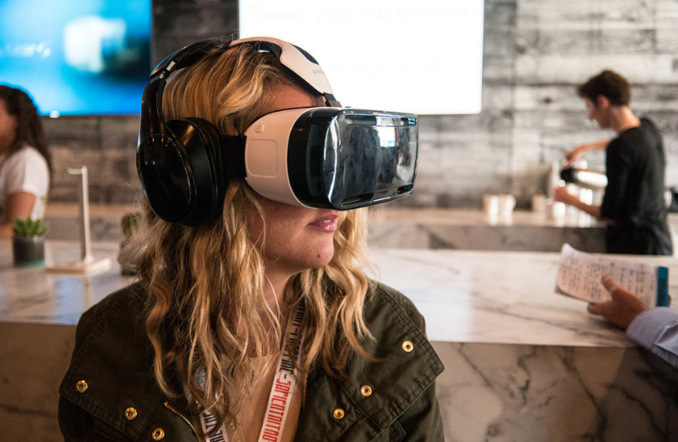Appalling number of opiate-dependent is one of the serious problems in the US today. The authorities are well aware of this, but nothing can help it since this form of drug dependence spreads legally due painkillers based on opiates.
The medical use of opiates is easily explained. They perfectly blunt the pain without incurring any sudden and serious problems for the body, and pain is the main reason for going to doctors. The problem of opiates-addiction is becoming a major concern for physicians and activists in the United States. 19 thousand people in the US died of opiates in 2014 – this is more than number of heroin deaths. The main catch here is that doctors could not find any decent replacement, comparable in efficiency and the level of damage to health.
Now, however, it seems that the solution (at least partial) is found. This is virtual reality. Dr. Hunter Hoffman and Dr. David Patterson, Professor of the UW School of Medicine, are engaged in the study and implementation of VR-technologies to reduce pain of their patients. Their work has already showed that this approach actually works.
"We found that the VR can blunt the pain as effectively as a moderate dose of hydromorphone (opioid analgesic) does" - said Hoffmann. However, it turned out that it is most effective just in combination with opiates - so the effect is much stronger than each component individually is. However, even this use of VR helps if not save people from addiction to narcotic painkillers, then to at least significantly reduce the dosage consumption.
Pain relief with help of virtual reality may seem something incredibly complicated and confusing, but in fact, the principle of this method is very simple. The thing is that "perception of pain requires conscious attention to it", - Hoffman tells the secret. "Virtual reality pulls on a huge amount of attention, so that the brain simply has less resources to process pain signals."
The rub in widespread introduction of the VR pain treatment is weak efficiency of this technology for chronic pain.
Virtual reality proved to be excellent in reducing acute pain. However, it does not work with chronic diseases, and opiates are only obvious choice here. The researchers are already working actively on this issue, and we are confident that over time, VR will help cope with chronic pain, especially that there already are certain achievements in this direction.
source: vice.com
The medical use of opiates is easily explained. They perfectly blunt the pain without incurring any sudden and serious problems for the body, and pain is the main reason for going to doctors. The problem of opiates-addiction is becoming a major concern for physicians and activists in the United States. 19 thousand people in the US died of opiates in 2014 – this is more than number of heroin deaths. The main catch here is that doctors could not find any decent replacement, comparable in efficiency and the level of damage to health.
Now, however, it seems that the solution (at least partial) is found. This is virtual reality. Dr. Hunter Hoffman and Dr. David Patterson, Professor of the UW School of Medicine, are engaged in the study and implementation of VR-technologies to reduce pain of their patients. Their work has already showed that this approach actually works.
"We found that the VR can blunt the pain as effectively as a moderate dose of hydromorphone (opioid analgesic) does" - said Hoffmann. However, it turned out that it is most effective just in combination with opiates - so the effect is much stronger than each component individually is. However, even this use of VR helps if not save people from addiction to narcotic painkillers, then to at least significantly reduce the dosage consumption.
Pain relief with help of virtual reality may seem something incredibly complicated and confusing, but in fact, the principle of this method is very simple. The thing is that "perception of pain requires conscious attention to it", - Hoffman tells the secret. "Virtual reality pulls on a huge amount of attention, so that the brain simply has less resources to process pain signals."
The rub in widespread introduction of the VR pain treatment is weak efficiency of this technology for chronic pain.
Virtual reality proved to be excellent in reducing acute pain. However, it does not work with chronic diseases, and opiates are only obvious choice here. The researchers are already working actively on this issue, and we are confident that over time, VR will help cope with chronic pain, especially that there already are certain achievements in this direction.
source: vice.com



















